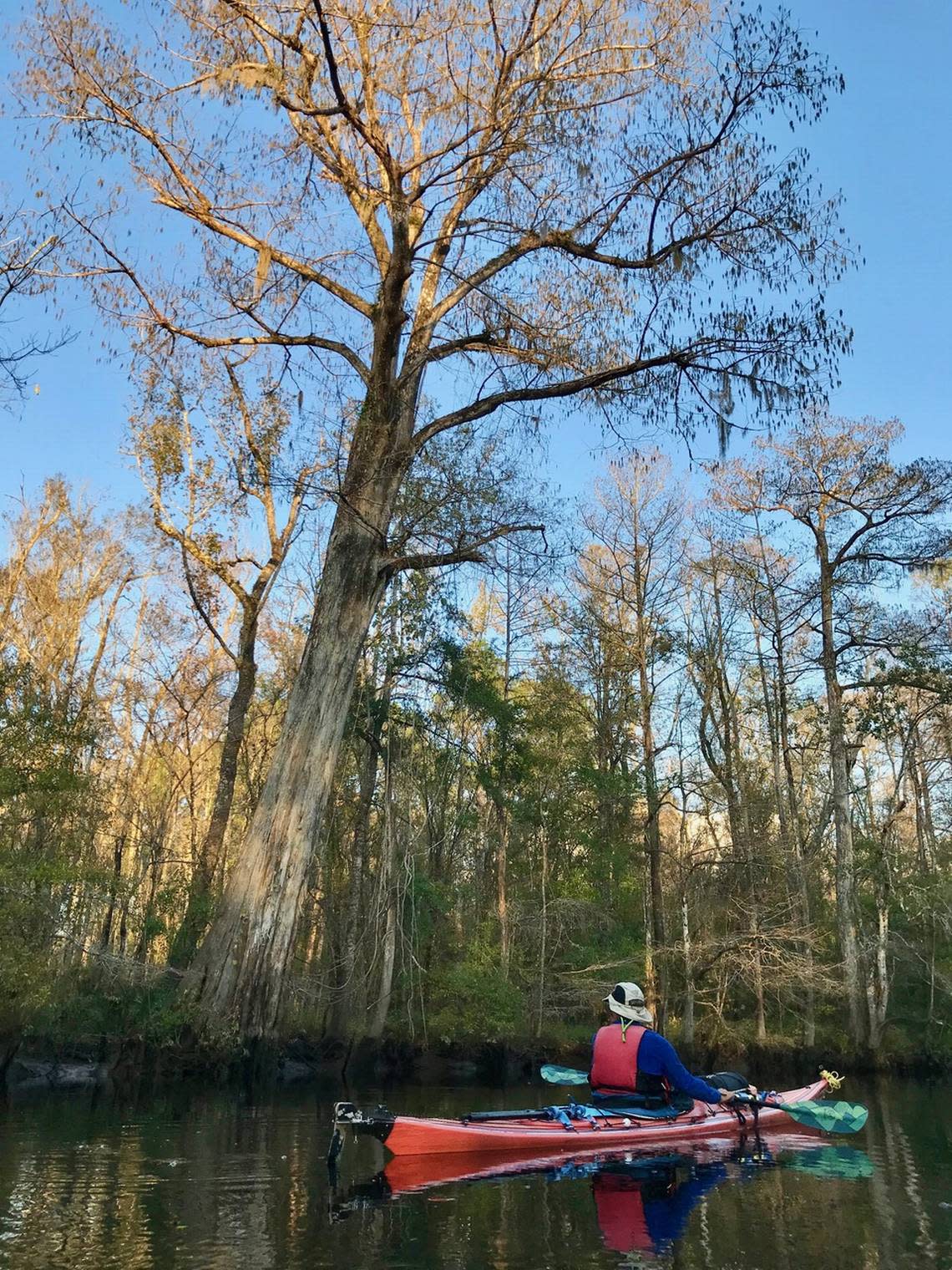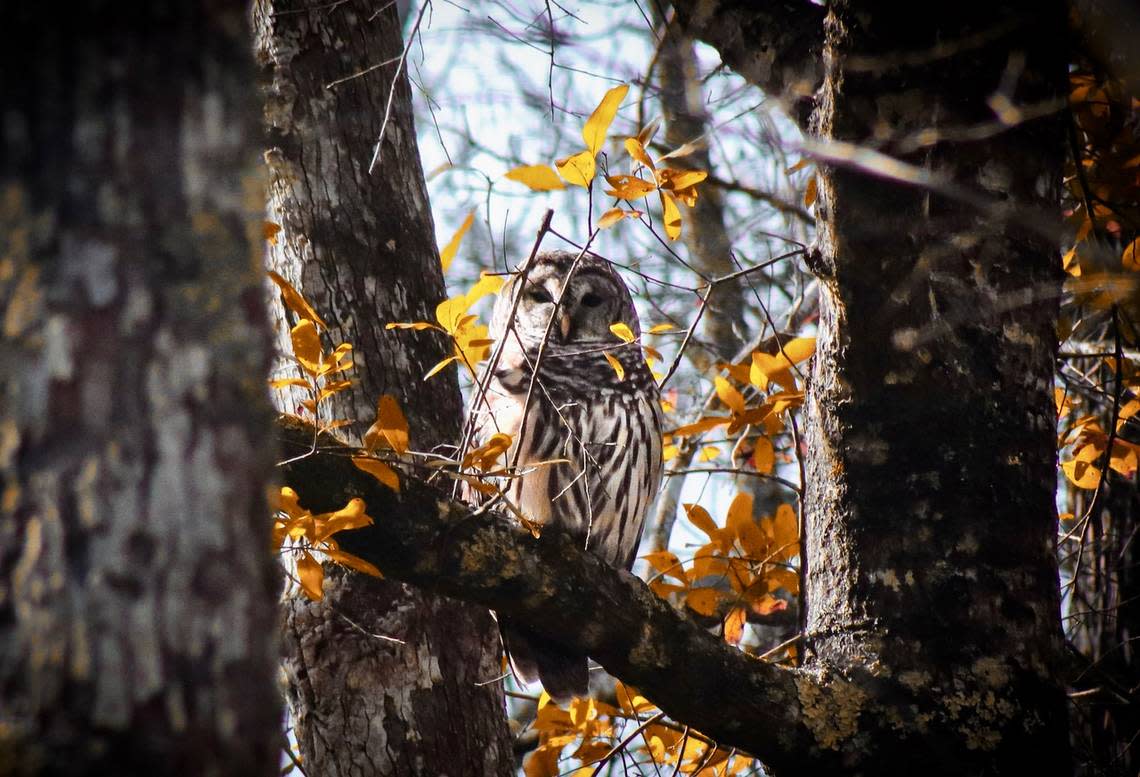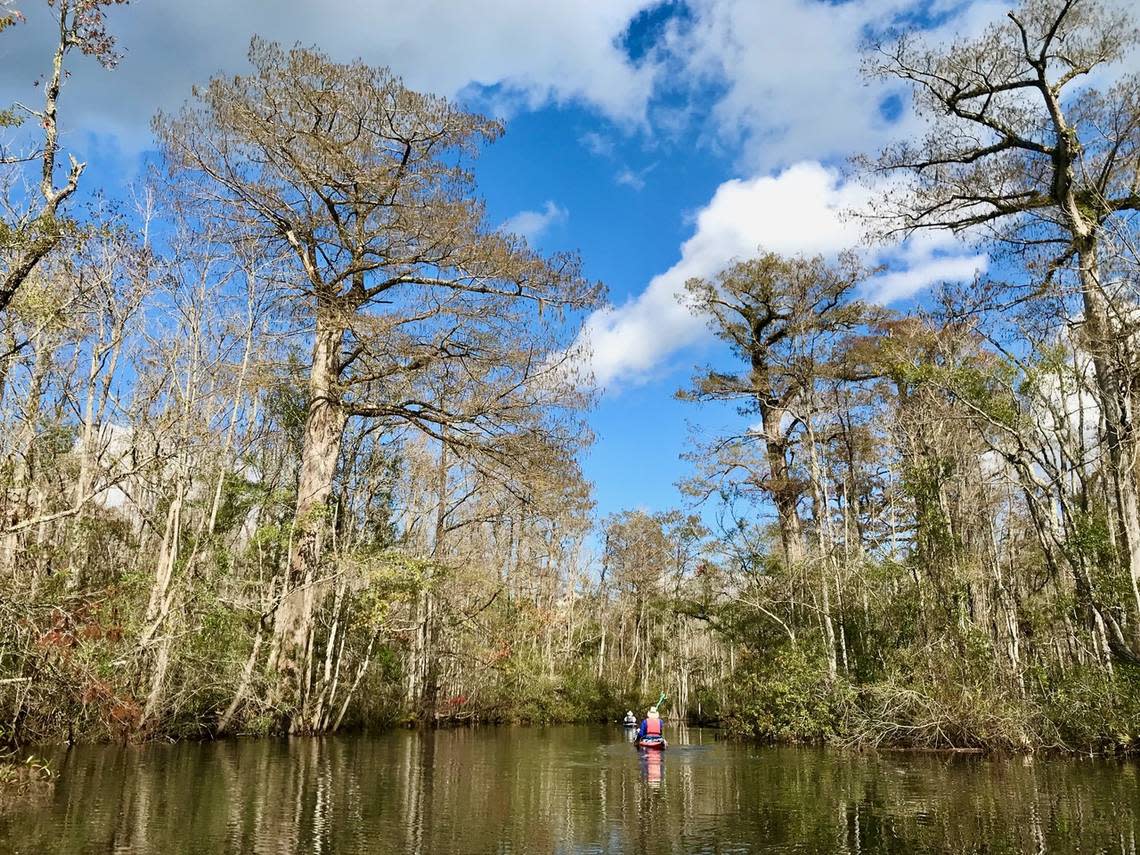A unique getaway: Kayaking the Lowcountry wilderness of Wambaw Creek offers solitude
The quiet black water slips beneath your kayak. Sunlight plays on the surface of the water, filtered through the leaves of tupelo and tall bald cypress trees — some hundreds of years old.
The only sounds you hear are the gurgle of the water around your paddle, and the occasional chatter of a woodpecker darting among the trees. The water swirls nearby and an alligator slips into the channel in front of you and then silently disappears, like a prehistoric submarine, only to resurface far behind you where he observes you with a wary eye.
You see other eyes, too. High in the trees you spot a barred owl, sitting on a limb and surveying her domain. The night hunter is a statue of feathers and could be carved from the wood of the tree, except that her eyes follow you as you paddle by. When you are alone in the wilderness, you are never truly alone.
The wilderness you are exploring is the Wambaw Creek Wilderness Area near McClellanville, and even a short visit to this mysterious, beautiful place is an unforgettable experience.
Named one of the “14 best places to canoe and kayak on national forests” by the National Forest Foundation, Wambaw Creek is a popular destination for outdoor explorers. It rises from the swamps between Charleston and the mighty Santee River. It snakes its way on a northeasterly track for about 10 miles from such colorfully-named watersheds like “Hell Hole Swamp” and forms a watery path through the heart of the Francis Marion National Forest.

The region is steeped in history, from the earliest colonial days and Huguenot settlements, to prosperous rice plantations that made men wealthy along its banks — while enslaving others. Numerous battles were fought in the Wambaw Swamps, where Gen. Francis Marion, the cunning “Swamp Fox,” outwitted the British or waylaid them in hit-and-run battles that earned him fame, and our nation its independence.
Wambaw Creek today is an untouched preserve that bears little mark of its historic past. Massive cypress trees stretch into the sky, and well-tended forest service roads take visitors to two well-maintained boat landings to provide easy access. A popular kayak and canoe trail along the Wambaw is 4.6 miles from Still Landing to the bridge at Elmwood Recreation area. This makes for an easy 2- to 4-hour paddle that is excellent for all skill levels. If you have more time and a desire to explore, you can paddle upstream from Still Landing before turning around for a descent of the creek to the takeout. This makes for about a 7- to 9-mile trip and offers some incredible wildlife and nature-viewing opportunities.
I recently paddled Wambaw Creek with a group of friends. We launched at Still Landing and paddled upstream to explore the upper reaches of the creek. After a few hours we turned around and began our descent toward the Santee. Wambaw Creek is affected by the tides, and though our trip was easy going, we could see the effect of the water levels on the banks and in the current as we paddled.

We took out at Elmwood, recording a trip of 9 miles (including several side trips into smaller creeks), and then headed off for dinner at a local restaurant. Along the way, we stopped by the St. James-Santee Parish Episcopal Church to check out the history of the brick church built in 1768, and then enjoyed a seafood dinner at the Seewee Restaurant. This rustic, friendly diner located on U.S. 17 in Awendaw has served authentic Lowcountry seafood and other fare for nearly 25 years. It was the perfect stop after a day exploring a genuine wilderness, such as you will find at Wambaw Creek.
Wambaw Creek Wilderness Area was created in 1980 and is a Lowcountry treasure. Located a little over two hours from the Beaufort area, Wambaw Creek near McClellanville is part of the Berkeley County Blueways, and is an easy drive that provides an excellent day trip into the wild that you can tailor-make to your schedule and experience level.
Getting there
Take U.S. 17 north through Charleston to McClellanville. At McClellanville, turn left onto S.C. 45. At 7.5 miles, turn right onto Forest Service Road 211. At 3.5 miles, turn left onto Forest Service Road 211B to Still Landing.
Elmwood Recreation area (suggested take-out) is located three miles further on FSR 211. This is a relatively easy paddle, but take precautions for encountering wildlife, and for exploring a wilderness area. There are stores and restaurants in nearby McClellanville, but there are no facilities at the landings.
For more information on exploring Wambaw Creek and the area, contact the U.S. Forest Service at (843) 336-2200 or visit www.berkeleyoutdoorlife.com. For information on the St. James-Santee Parish Episcopal Church, go to https://www.brickchurchstjames.org.
